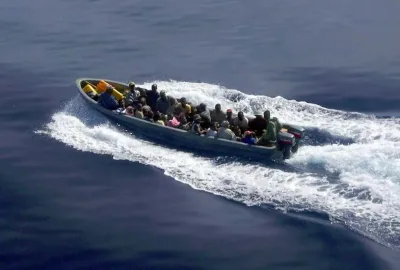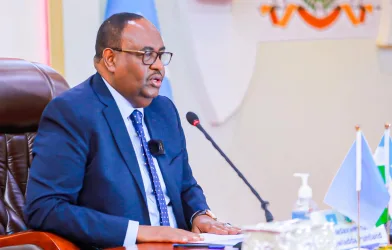The Acacia bussei, a slow-growing hardwood, has long been the backbone of Somalia’s multimillion-dollar trade in…
 The Acacia bussei, a slow-growing hardwood, has long been the backbone of Somalia’s multimillion-dollar trade in charcoal.
The Acacia bussei, a slow-growing hardwood, has long been the backbone of Somalia’s multimillion-dollar trade in charcoal.
For decades, the country struggled to implement a 1969 ban on charcoal and firewood exports. The gradual erosion of state institutions, which resulted in complete lawlessness and an outbreak of a full-fledged civil war in 1991, only further undermined the initiative.
The production and export of charcoal – an economic activity that dates to pre-colonial times – has long served to meet local and regional energy requirements as well as provide livelihoods opportunities for many families.
However, with the protracted conflict, weak law and order, vague rules over resource ownership, and a lack of alternative sources of energy and livelihoods, the last few decades have seen an increase in unsustainable charcoal production.
Consequently, the trade in charcoal has accelerated threats such as environmental degradation and conflict over the control of resultant revenue. Despite a 2012 UN Security Council ban on importing Somalia’s charcoal, the trade has continued apace: the market value of the exported commodity was estimated to be more than $250 million dollars over the two years following the ban.

Why should the environmental community care about the threat posed by charcoal?
A study by the Food and Agriculture Organization, in conjunction with the Somalia Water and Land Information System, estimated that there is a 5 per cent annual decline in the Acacia bussei due to felling. In 1996, the War-Torn Societies Project reported that northeastern Somalia was producing approximately 4.8 million sacks of charcoal annually. Such a volume would require the logging of nearly 2.1 million Acacia trees.
Consequently, with the deforestation and lack of replanting, the Acacia bussei was placed on the International Union for the Conservation of Nature’s Red List of threatened species.
For years, this evergreen, drought-tolerant indigenous tree has provided feedstock to pastoralists and helped them stay resilient to droughts. But with increased demands for charcoal, the Acacia bussei is becoming an impractical source of fodder. This has jeopardized the livelihoods of many pastoralists.
The losses due to such recurring droughts will only increase in the future: In a global ranking of vulnerability to the impacts of climate change, Somalia ranked 7th out of 233 countries and regions.
Following the Security Council ban, in 2016 various UN agencies, including the United Nations Development Programme, the Food and Agriculture Organization and UN Environment, launched an initiative to promote international cooperation in support of the ban.
The initiative, the UN Joint Programme for Sustainable Charcoal Reduction and Alternative Livelihoods, notes that due to the absence of an effective government, the country lacks adequate natural resource management and enforcement mechanisms. It calls for an in-depth assessment of its institutional capacity to address environmental degradation.
“Overcoming the challenges charcoal poses to the environment requires strengthening of institutions and the provision of alternative and sustainable livelihood opportunities. Natural resource-sharing and management mechanisms should be implemented in partnership with the Government of Somalia,” said Saidou Hamani, the coordinator of UN Environment’s work on resilience to disasters and conflicts in Africa.

With the prevalent political instability, influential traders and militia groups – who do not engage in the charcoal production process – have infiltrated the charcoal distribution chain to extort income.
The value of the revenue has also been acknowledged by the Al-Shabaab extremists, who earn millions from this “black gold” and offer protection to export companies that are owned by the group’s ideological affiliates.
However, recent advances of the African Union Mission in Somalia troops, Kenyan, Ethiopian and Somali forces, have led to the recovery of territory from the Al-Shabaab group and appear to have halted the trade.
“Somalia has a huge opportunity to diversify its energy sources through reduction of reliance on charcoal and firewood in favour of alternatives like wind, solar, liquefied petroleum gas, biogas, hydro and high-efficiency thermal generation and distribution systems,” said Hamani.
Despite possessing untapped reserves of numerous natural resources such as uranium, iron ore, tin, gypsum, bauxite, copper, salt and natural gas, Somalia’s energy sector remains grossly under-developed. Organic plant and animal material provide over 95 per cent of primary energy for households either as firewood or charcoal.
The UN agencies hope to exploit the huge opportunity to diversify the country’s energy sources and to reduce its reliance on charcoal and firewood by introducing alternative sources of energy. This will offer a much-needed lifeline to the Acacia bussei.
Learn more about UN Environment’s work the environmental causes and consequences of disasters and conflicts.







